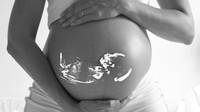
How is research used in Psychology?
Research in psychology as in all fields of science, has two focuses of interest: basic research and applied research.
Basic research is concerned with the quest for knowledge, regardless of whether it has immediate practical value.
Applied research seeks to improve the human condition by discovering something that can be put to practical use.
All sciences have their basic and applied aspects. Although the applied - basic distinction is meaningful, it is somewhat artificial, because research often serves both scientific curiosity and practical goals at the same time.
How do psychologists work? What methods do they use?
As with all science, psychology is interested in discovering new information that can be verified by other researchers. The methods that psychologists use include: experimental method, observational method, survey method, test method, and case histories.
Experimental method is the most widely used of scientific ways of getting information. The method can be used outside the laboratory as well as inside. The experimental method is a matter of logic, not of location. However, most experimentation takes place in special laboratories chiefly because the control of conditions commonly requires special equipment that a university or in research institute where it is accessible to scientists who work on a variety of topics.
Basically, psychology is interested in determining the variables of behavior and the ability to exercise precise control over these variables. This is where the experimental method is distinguished from other methods used in psychology. First, we have the independent variable. This is the factor under variable is often the stimulus. It is so named because we can change it "independently". On the other hand, responses, "depend" on these changes, and we call them the dependent variables under investigation.
The experimenter, before making any actual observation defines and analyzes the problem under consideration in what he calls the experimental design following these steps:
1. A formal definition of the problem is stated.
2. The experimenter works out the conditions under which observations and measurements are to be made.
3. The phase of securing the apparatus or instruments to be used in the study is done.
4. The experimenter outlines the procedures he will follow in dealing with the results obtained.
In stating the problem, the experimenter follows one of two approaches or sometimes both.
1. He may begin by saying in effect: "Lets try this and see what happens".
2. He may set up certain hypotheses: "If I do this and so, this is what will happen." The test of a theory or hypothesis is what happens to the dependent variable. If it changes in the predicted manner, then the hypothesis is accepted. If prediction fails, then the hypothesis is rejected.
In some situations we want to compare change with no change. Example: We may wish to see if some prescribed exercise will give people more muscular strength. A group that will do the exercise is the experimental group. The group that will not do the exercise is the control group. The control group provides a baseline from which the effect of the experimental treatment is measured.
Observational method is a field study method of making observations of what is going on in the environment. The investigators go into the field with a question or set of questions and make observations. These are recorded accurately in order to avoid projecting their own wishes or biases onto what they report.
Survey method gives us valuable guidelines for measuring attitudes, getting at those factors that influence behavior, and making predictions. After all, human behavior has much in common, and by means of surveys we can keep a sort of psychological stethoscope on what is going on.
An adequate survey requires a carefully pretested questionnaire, a group of interviewers trained in its use, a sample carefully selected to ensure that the respondents are representative of the population to be studied, and appropriate methods of data analysis, so that the results are properly interpreted. The word population covers "all" of anything and this is difficult to arrive at. Generally, a sample from a population is selected using random selection. In random sampling every unit in the population has a mathematically equal chance of being included in the sample thus making the sample representative of the population.
Test method makes use of the test as a research instrument. The test is used to measure all kinds of abilities, interests, attitudes and achievements.
Case histories are scientific biographies which are important sources of data for psychologists studying an individual. The case histories can be of institutions or groups of people.
Most case histories are prepared by reconstructing the biography of a person to include the individual's earlier history necessary to understand the present behavior. Other case histories are based on a longitudinal study by following an individual or group of individuals over an extended period of time, with measurements made at periodic intervals. The case history is constructed from actual observations made by an investigator according to a plan.


















